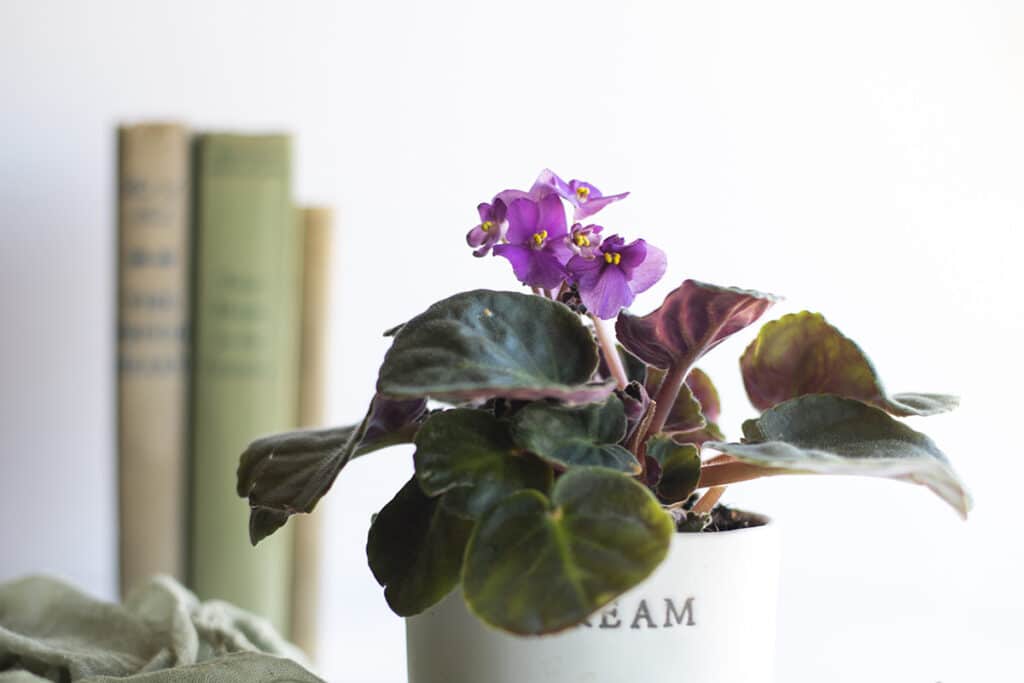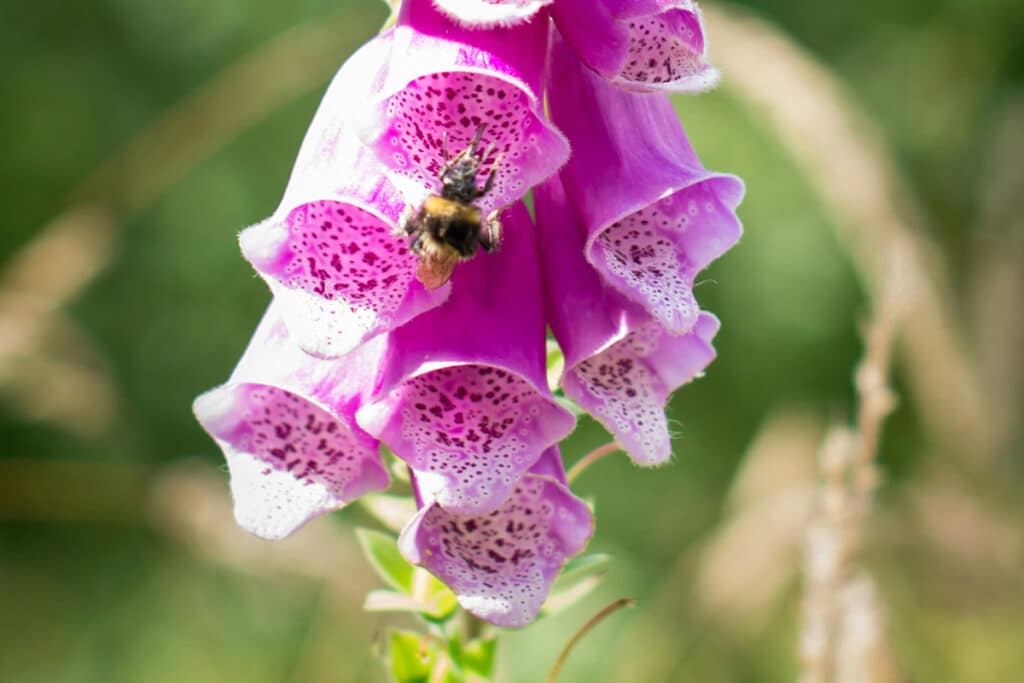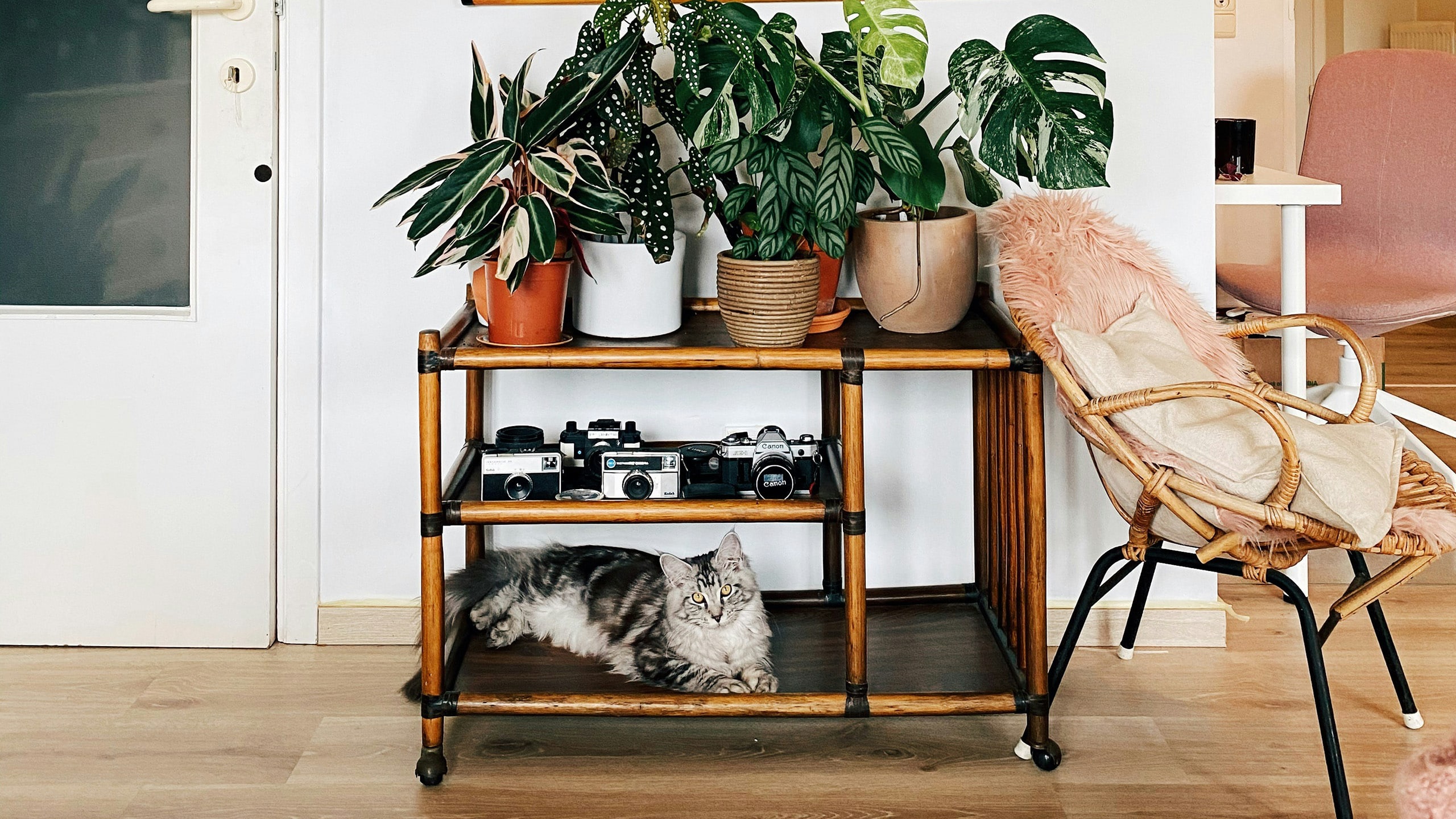Which indoor plants are safe for your pets? Which plants are toxic?
In this article, we put together a hand-picked list of fifteen pet-safe indoor plants. Afterward, we added a quick list of common indoor house plants to avoid bringing into your home.
We hope you will use this list and the practical advice on plant care to best include these non-toxic plants in your decor. Your pets will thank you for doing this research!
We shared some tips on outdoor safety as well that complement this article.
Key Takeaways
Choosing pet-safe indoor plants is essential for protecting the well-being of your pets. You can most definitely find a wide variety of options without compromising the beauty of your home decor.
A diverse range of pet-friendly indoor plants such as Boston Ferns, Spider Plants, and others enable pet owners to maintain a lush indoor garden without the risk of pet poisoning.
Crafting a pet-friendly environment can be achieved through smart plant placement, certain pet-safe gardening practices, and awareness of toxic plants.
Table of Contents
The Importance of Choosing Pet-Safe House Plants
Much like children, pets are naturally curious about their surroundings. Unfortunately, this may lead them to munch on houseplants, which could spell severe health issues if those plants are toxic. Have you ever heard “curiosity killed the cat”? We don’t know for sure where that idiom came from, but it could have certainly been a house plant!
For anyone who hasn’t experienced it, rushing a pet to the vet after it’s ingested a harmful plant underscores the importance of picking pet-friendly indoor plants. These are emergencies that can easily be avoided.

Choosing pet-friendly plants goes beyond risk prevention. They create a win-win situation where you can enjoy indoor gardening perks like air purification and mood enhancement, all while keeping your pets safe. Plus, with such a wide selection of non-toxic plants to choose from, you won’t have to compromise on style and beauty for your home.
The Top 15 Pet-Safe Indoor House Plants
As pet parents, we understand the concern for your pets’ safety around houseplants. So, we have compiled a handy list of 15 pet-safe indoor plants that will revitalize your home and create a safe environment for your pets to explore.
African Violet
For indoor gardeners, African Violets are a pet-friendly option. These flowering plants prefer well-draining soil and thrive in filtered light.
Additionally, they brighten up the home with their vibrant blooms while posing no risk to your pets if ingested.
Air Plants
Due to their non-toxicity and easy care, Air Plants are an outstanding choice for pet owners. These plants thrive in indirect sunlight and require adequate air circulation. They also need regular misting or soaking as they absorb water through their leaves.
I always thought air plants didn’t need water based on their name, but my wife is the plant expert here!
Areca Palm
Needing bright, indirect light and regular watering, the Areca Palm is another pet-safe indoor plant for you to enjoy.
It is known for its vibrant green fern-like structure. An Areca Palm acts as a natural air purifier, removing common household toxins and providing clean air for your family.
Baby Rubber Plant
Also known as Peperomia obtusifolia, the Baby Rubber Plant is quite striking with its thick, spoon-shaped green leaves. They can grow in natural environments that are typically shady with high humidity.
In addition to being non-toxic and safe for pets, Baby Rubber Plants help purify the indoor air.
Boston Fern
Boston Ferns, distinguished by their erect, sword-shaped fronds, make a fantastic addition to any pet-friendly home. They thrive in medium-bright light and prefer well-drained but moisture-retaining soil.
To keep your Boston Ferns happy, maintain a humid environment, especially during winter. These ferns can be beautifully displayed in hanging baskets or as seasonal outdoor accent plants.
Calathea Plants
Known for their broad, green, and vibrant leaves, Calathea Plants are non-toxic and pose no threat to pets. They need indirect light and very consistent watering. Keep the soil moist without allowing it to become waterlogged.
Calathea Plants love warm temperatures and especially humid environments. Visually, these house plants offer an exotic touch to your living space.
Chinese Money Plant
The Chinese Money Plant is a charming and pet-safe addition to your indoor garden. They’re easy to care for and only need bright, indirect sunlight to grow.
Money Plants are treasured for producing numerous offshoots, often called ‘pups’, that can be easily propagated, which can quickly flesh out your plant family.

Nerve Plant
Also known as Fittonia, the Nerve Plant is loved for its vibrant vein patterns. This pet-safe plant thrives in high humidity and prefers well-draining soil.
It’s great for terrariums especially, contributing to a healthier environment for lizards and amphibians.
Parlor Palm
The Parlor Palm, also a pet-friendly choice, is low-maintenance and thrives in shaded areas. Its elegant arching green pinnate leaves make it a perfect plant for any indoor setting. It requires minimal maintenance, and the soil should dry out fully before watering.
This palm poses no threat to your pets and acts as a stunning addition to your indoor garden.
Peperomia
Peperomia are quite adaptable and thrive in indoor environments. They are versatile, popular houseplants. It comes in over a thousand varieties, offering a wide range of textures, colors, and forms which is a great way to punch up a lot of green plants.
Peperomia prefers medium to bright indirect light and should be watered sparingly, allowing the topsoil to dry out between waterings. These beautiful plants are a great pet-friendly addition to your indoor garden.
Polka Dot Plant
Featuring vibrant spotted leaves, the Polka Dot Plant is sometimes called a freckle face plant and can inject a splash of color into any indoor space.
This pet-safe house plant prefers bright, indirect light and should be kept moist, but not waterlogged, with higher humidity levels being beneficial.
Ponytail Palm
The Ponytail Palm, characterized by its unique bulbous trunk, is low-maintenance and very pet-friendly. This palm thrives in bright, indirect light and requires minimal watering due to its ability to store water in its trunk.
It’s a safe choice for households with pets, adding a touch of the tropics to your home.
Prayer Plant
Prayer plants are another pet-safe favorite and add a unique touch to your indoor garden. They can adapt well to a variety of light conditions, however, they thrive best in bright, indirect light.
What makes this plant stand out is its distinct behavior of folding its leaves each evening, resembling hands folded in prayer. Cats may decide they need to interfere with this process, but even if they do you have nothing to worry about.
Spider Plant
The Spider Plant is characterized by its long, thin, waterfall-like leaves and is a wonderful, non-toxic house plant that flourishes under bright, indirect light. It’s a perfect plant for hanging baskets or high shelves, out of your pet’s reach, yet still providing a lush green presence in the room.
The care for Spider Plants is straightforward, requiring well-draining soil and watering when the top inch of soil feels dry.

Staghorn Fern
The Staghorn Fern is recognized by its distinctive antler-shaped fronds. They make fantastic additions to any indoor plant collection. They are non-toxic to both cats and dogs, making them a safe choice for pet owners.
For healthy growth, Staghorn Ferns require indirect sunlight and should be watered frequently.
Creating Your Own Pet-Friendly Indoor Garden
Ready to transform your indoor space into a pet-friendly indoor garden? Here’s how:
Start by choosing a planter box made from pet-safe materials like cedar pickets and select pine, tailored to fit a specific space.
Applying silicone sealant on the interior edges helps with water retention and prolongs the garden’s durability.
Once the planter box is prepared and any applied stains are dried, you can fill it with potting soil.
Plant the pet-safe plants from our list above.
A thriving indoor garden doesn’t just happen overnight. It requires consistent watering and care. The reward? A healthy source of natural greens for your pets, improved indoor air quality, and a visually appealing living space that brings you closer to nature.
Tips for Keeping Both Pets and Plants Safe
Keeping your pets safe while maintaining a lush indoor garden may seem like a balancing act, but it’s perfectly doable with a few handy tips. Here are some ways to keep your pets safe around your indoor plants:
Place plants out of pets’ reach using tall planters, pots, macramé plant hangers, or even install plant shelves
Cover plant soil with materials like pinecones or seashells to prevent pets from digging
Spray plants with a diluted lemon juice solution to deter pets from nibbling on them
By following these tips, you can enjoy your indoor garden without worrying about your pets’ safety.
Observing your pet’s behavior around plants can help you understand which plants they are drawn to and therefore may require extra precautions. Here are some tips to keep in mind:
Use stable, heavy planters to prevent dogs from knocking over plants
Keep mildly toxic plants behind other plants or in inaccessible areas
If unsure about a plant’s pet safety, err on the side of caution and keep the plant on a high shelf away from pets
Identifying and Managing Toxic Plants
Given how important pet safety is to us pet parents, knowing how to identify and handle toxic plants is essential. Some common toxic plants include:
- Azalea
- Belladonna
- Caladium
- Daffodils
- English Ivy
- Foxglove
- Holly
- Pothos
- Rhubarb
- Rubber Tree Plant
- Tulips
- Yew

These plants often contain poisonous components such as insoluble Calcium Oxalate, which can lead to severe health issues in pets.
Knowing the symptoms of plant poisoning is equally important. Symptoms that can indicate plant poisoning include:
- difficulty breathing
- diarrhea
- drooling
- heart failure
- hearth rhythm abnormalities
- pain
- seizures
- swallowing issues
- tremors
- vomiting
If a pet ingests a toxic plant, immediate consultation with an emergency veterinarian or the ASPCA Animal Poison Control Center is crucial for guidance on necessary actions.
Alternative Options for Enrichment for Your Pets
While treat-dispensing toys and puzzles are great for mental stimulation in pets, it turns out that certain plants can fill that role as well.
To that end, create a pet herb garden with plants like lemon balm, Italian parsley, and peppermint. Providing pets, with their own chewable plants, such as cat grass, can divert their attention from other household plants and satisfy their natural chewing instincts.
Closing Thoughts
Having a pet-friendly indoor garden can be a delightful experience for both you and your furry companions. The key is to choose pet-safe plants, place them appropriately, and ensure they receive proper care.
Afterward, you can enjoy the benefits of indoor gardening (which is fun even if you don’t have pets!), including improved air quality and aesthetic appeal, while providing a safe and stimulating environment for your pets.
Remember, your pets rely on you for their safety. By being mindful of the plants you bring into your home and observing your pets’ behavior around them, you can create a safe space that nurtures both your plants and pets. Happy gardening!
Frequently Asked Questions
What are the best pet-friendly plants for bathrooms?
Boston ferns, button ferns, bird’s nest ferns, and Kimberly Queen ferns are all safe and good choices for pet-friendly bathroom plants and thrive in slightly humid environments.
How can I keep my pets safe around indoor plants?
To keep your pets safe around indoor plants, choose pet-safe plants, place them out of reach, and observe your pet’s behavior around plants.
Using natural repellents like a diluted lemon juice solution can also deter pets from nibbling on plants.
How can I identify toxic plants?
To identify toxic plants, conduct thorough research. Look out for common toxic plants including belladonna, English ivy, daffodils, tulips, foxglove, holly, pothos, rhubarb, yew, azalea, caladium, and nightshade, which contain poisonous components.
Is the Kimberly Queen Fern toxic?
No, the Kimberly Queen Fern is non-toxic to your dogs and cats.
